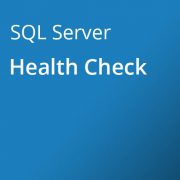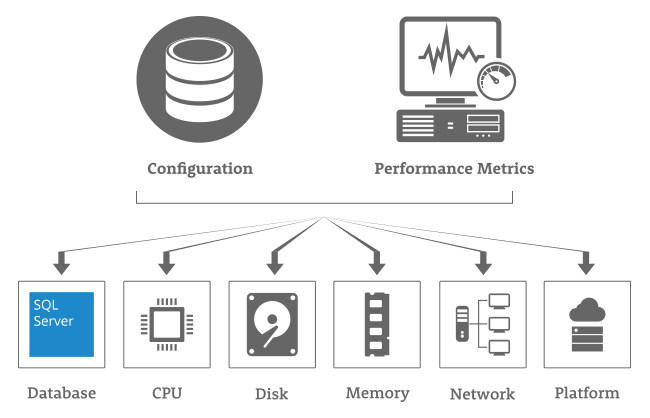Do you have SQL Server problems and don’t where to turn for help? SQL Server Health Check Step 1: Collect Metrics describes how we obtain a comprehensive view of your database environment. All in all, this blog series is intended to help you decide if a thorough SQL Server evaluation is right for your situation.
SQL Server Health Check Step 1: Collect Metrics
Collect Configuration and Performance Metrics

Previously, we explored SQL Server Health Check Benefits. Now that the end results are clear, let’s talk about the process used to achieve these benefits. We begin with the end in mind by interviewing key stakeholders. We want to make certain business and continuity objectives are top of mind.
Once we have a clear understanding of your business goals, we use UpSearch’s proven methodology and proprietary scripts to get configuration and performance metrics on just about anything that touches SQL Server.
We collect information about your server and infrastructure, SQL Server instance and detailed database information. In particular, we pay careful consideration to SQL Server performance metrics, including:
- Host Statistics
- Storage Configuration
- SQL Instance Activity and Performance

And when it comes to Queries and Indexes, we pay special attention to long running and expensive queries, top missing indexes, and duplicate indexes.
SQL queries can perform poorly for a variety of reasons. Some factors are how they are written, inadequate hardware, or missing indexes to support the workload. We recognize the importance of identifying queries that perform poorly based on:
- Number of Executions
- CPU cost
- Disk Impact (Reads and Writes)
- Duration
In summary, the first step of UpSearch’s SQL Server Health Check process is to provide a comprehensive view of your database environment. This process can include multiple instances of SQL Server.
This blog series continues with Step 2: Analyze Results. At the conclusion of this series, you will have a better understanding of how your organization will benefit from a SQL Server Health Check.



Leave a Reply
Want to join the discussion?Feel free to contribute!